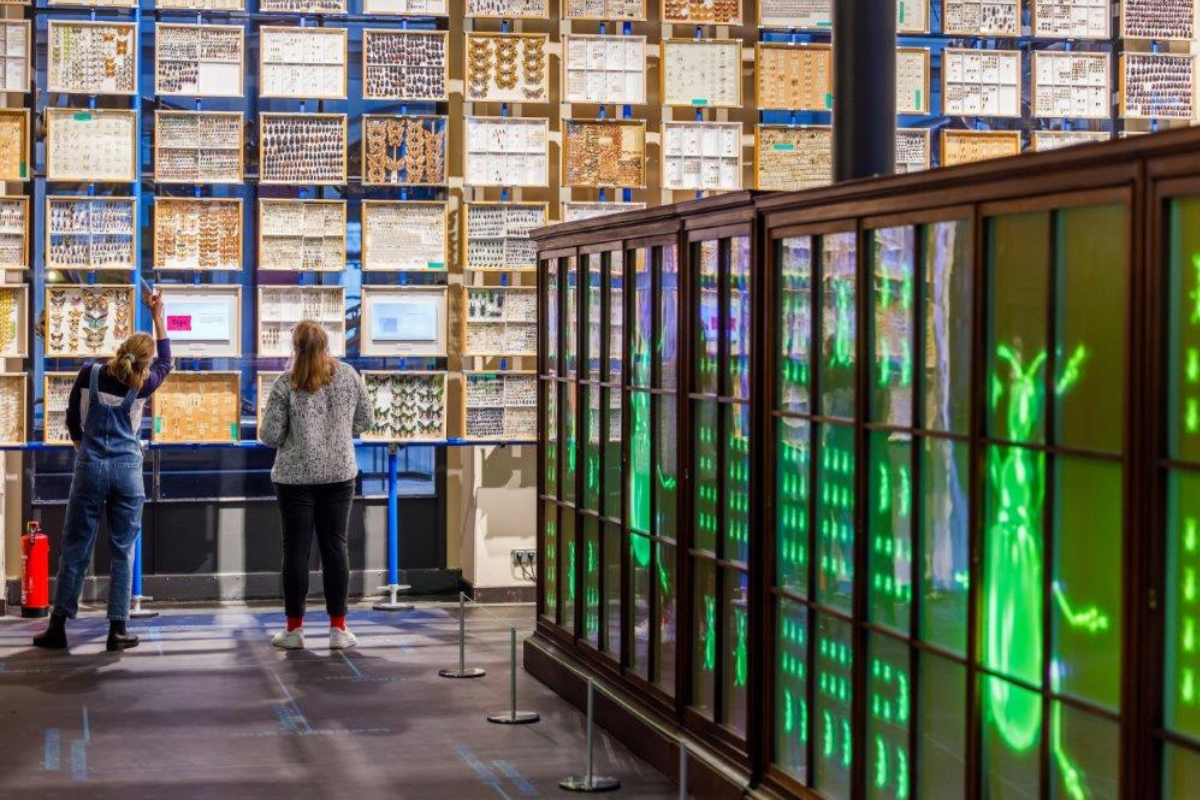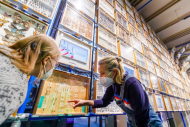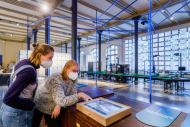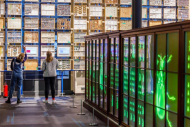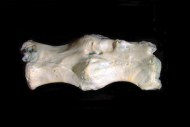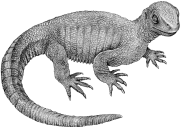A global database for meeting the challenges of the 21st century
For the first time, an international initiative links more than one billion natural history objects in scientific collections of 73 museums in 28 countries. It also shows: there are dramatic gaps. The results are published in the current issue of the journal Science.
We know less about the Earth's surface and ocean than we do about the moon. It is time to collectively lift the knowledge in natural history collections worldwide and make it available to all people as a scientific infrastructure. The first step has been taken with a global coalition of 73 museums and herbaria. The Museum für Naturkunde Berlin played a leading role in this effort.
The survey shows that there are 1.1 billion objects and thus an incredible amount of relevant information lying dormant in the 73 scientific collections. For example, the oldest evidence of virus (disease) in Earth history was found in Berlin – in a Jurassic dinosaur from 150 million years ago and in a lizard-like creature from the Permian period 289 million years ago. But there are also dramatic gaps! That's what the results of the Global Coalition's unprecedented survey show, published in the current issue of Science.
Scientific collections preserve the basic knowledge about past worlds that allows humanity to predict and prepare for future conditions. "Natural history collections are humanity's insurance policy. Although the overall collection is truly vast, the study also showed that there are conspicuous gaps in museum collections. This should spur us to work together to close them quickly.
Our Center for Integrative Biodiversity Discovery will continue to make targeted contributions to efficiently discovering and researching globally unknown species using AI and robotics," says Professor Johannes Vogel, Director General of the Museum für Naturkunde Berlin. The gaps affect the tropics as well as the polar regions, the ocean as well as freshwater systems. The diversity of arthropods and microorganisms – and thus much of life on Earth – is simply undiscovered.
"So not only must knowledge from collections be made easily accessible and fairly usable, we also need a common, global strategy to rapidly close the gaps in taxonomic, geographic, stratigraphic and cultural understanding of the natural world," Johannes Vogel emphasizes. The three natural history research museums of the Leibniz Association Berlin, Bonn and Frankfurt are working together on this. Our goal: One world – one collection – a good future for all living things.
A global approach for natural history museum collections
- Natural history museums hold scientific collections that are uniquely positioned to respond to today’s interlocking crises. Collections preserve baseline knowledge of past worlds that allows humanity to forecast, and prepare for, future conditions.
- The objects and specimens collected over the last 300 years, many dating back thousands to millions of years, are directly relevant to pressing issues as diverse as wildlife conservation, pandemic preparedness, food insecurity, invasive species, and biodiversity loss, among others. And yet there is no central catalogue of what these institutions have.
- It is extraordinary to think such a catalogue does not exist and equally challenging to appreciate the magnitude of the task. The 73 museums and herbaria, from 28 countries, that participated in a recent survey conducted by the National Museum of Natural History and the American Museum of Natural History, in partnership with a consortium of museums and scientists, have a combined 1.1 billion objects managed by approximately 4,500 science staff and 4,000 volunteers. Most of these materials are dark data – meaning only 16 percent of the collections have digitally discoverable records.
- Organizers created a shared framework of 19 collection types by 16 geographic regions, with 304 distinct cells that capture collection categories. The 19 collection types span biological, geological, paleontological, and anthropological collections and 16 terrestrial and marine regions that cover the entirety of the Earth. The project is explained in a recent (March/ 23, 2023) paper in Science magazine, "A Global Approach for Natural History Museum Collections".
- The first phase of this initiative was to assess the holdings 73 of the world’s largest museums; future efforts aim to expand the effort to include the hundreds of smaller museums. The sum of the collections of the 73 museums is vast but the survey showed that there are conspicuous gaps with respect to tropical and polar regions, marine systems, and undiscovered arthropod and microbial diversity. In addition to expanding the survey to include smaller holdings, the aim is to use this framework to accelerate digitization and facilitate, where possible, genomic sequencing in order to create a coordinated global strategy for future stewardship and fair use of the global collection that fills the gaps in taxonomic, geographic, stratigraphic, and cultural understanding of the natural world.
Further Information:
